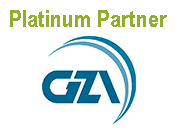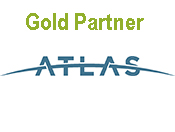By: Isaac Anderson, Project Manager, Cooperstown Environmental and LSPA Technical Practices Committee Member
Many of you know that the 2010 Remediation General Permit (RGP), issued by the United States Environmental Protection Agency, Region 1 (EPA) under the National Pollutant Discharge Elimination System (NPDES), expired in September 2015. As noted in the LSPA email blast sent on September 15, 2016, the Draft RGP was published in the Federal Register on August 18, 2016, and EPA accepted public comments until September 19, 2016. What many of you are left wondering is, what happens next, and what should you do in the interim if you have a project that requires coverage under the RGP before the new RGP is available?
“What happens next?” is the easier of the two questions to answer, but if you are short on time, I suggest that you skip ahead a few paragraphs to the section entitled, “What should you do in the interim?”
What Happens Next?
EPA considers all comments received in writing during the public comment period for the Draft RGP, and determines if any changes to the permit are necessary or appropriate based on the comments received. After consideration, EPA prepares a written response to the comments. The timeframe for EPA’s Response to Comments (RTC) varies, based on the number of comments received and the degree of technical or legal complexity associated with the comments. The RTC is provided with the Final RGP, both of which will be available on EPA’s RGP website (https://www3.epa.gov/region1/npdes/rgp.html).
Once EPA completes the RTC and any changes to the final RGP, EPA provides a copy of the Final RGP and RTC to each state covered under the permit. The states review the Final RGP and RTC and provide water quality certifications (required under Section 401 of the Clean Water Act) to EPA. In addition to the Section 401 certifications, EPA requests concurrence from the Coastal Zone Management office in each state to ensure that the RGP is consistent with the state’s coastal zone management plan. EPA also seeks concurrence from the United States Fish & Wildlife Service and the National Marine Fisheries Service to make certain that the permit is protective of endangered species. Once the necessary certifications and concurrences are received, EPA will issue the Final RGP.
Notice of the availability of the Final RGP will then be published in the Federal Register. The Notice of Availability will specify the effective date of the new RGP, after which time the expired 2010 RGP will be superseded.
What Should You Do in the Interim?
So what is an environmental professional to do in the meantime if his/her client requires permit coverage under the Clean Water Act?
The following is an excerpt from the first page of the 2010 RGP, emphasis added:
This permit shall become effective on September 10, 2010. If this permit is not reissued prior to the expiration date, it will be administratively continued in accordance with the Administrative Procedures Act and remain in force and in effect. However, Region I New England’s Office of the U.S. Environmental Protection Agency (EPA) cannot provide written notification of coverage under this general permit to any permittee who submits Notice of Intent to EPA after the permit’s expiration date. Any permittee who was granted coverage prior to the expiration date will automatically remain covered by the continued permit until the earlier of: reissuance of this permit, at which time the permittee must comply with the Notice of Intent conditions of the new permit to maintain authorization to discharge; the permittee's submittal of a Notice of Termination; issuance of an individual permit; or a formal permit decision by the Director not to reissue this general permit, at which time the permittee must seek coverage under an alternative general or individual permit.
It is clearly stated above that EPA cannot provide written notification of coverage to operators that submit a Notice of Intent (NOI) for the 2010 RGP after the 2010 RGP has expired. However, discharges requiring NPDES coverage prior to the availability of the new RGP may have other NPDES permit options. Certain dewatering projects may be able to obtain coverage under EPA’s Dewatering General Permit (DGP), if the discharge does not contain pollutants above the levels specified in that permit. Remediation or dewatering projects may choose to submit an application for an individual NPDES permit, if the discharge is ineligible for the DGP. Alternatively, while EPA is no longer accepting 2010 RGP NOIs for sites that would typically require RGP coverage a letter including all the information that would otherwise be provided to EPA in the 2010 RGP NOI may be submitted. EPA contacts for these submissions are: Shauna Little ([email protected] and 617-918-1989) for the RGP and individual permits, and Suzanne Warner ([email protected] and 617-918-1383) for the DGP.
Consistent with the General Application Requirements proposed in the Draft RGP, operators with existing discharges must either obtain coverage under the new RGP or terminate discharges within 90 days following the effective date of the new RGP. If a discharge will be terminated within 90 days after the effective date of the new RGP, an operator will not be required to apply for coverage under the new RGP. If the operator expects or intends to continue an existing discharge for more than 90 days after the effective date of new RGP, the operator must submit a NOI to EPA consistent with the requirements of the new RGP. For any new discharge, which are those discharges beginning after the effective date of the new RGP, coverage under the 2016 RGP must be obtained prior to beginning to discharge. Discharges are not covered by the RGP until authorization is received from EPA in writing, which can now take up to 30 days, following the submittal of the NOI.
If you are interested in a technical update on the application process or conditions of the new RGP, stay tuned for NPDES RGP training opportunities in the upcoming months. The LSPA is looking forward to working with EPA Region 1 to bring training seminars and continuing education opportunities to environmental professionals and wastewater treatment plant operators once the new RGP has been issued. The training will focus on changes to the RGP, the new RGP application process, and in general, the limitations and requirements of the new RGP.
The author would like to acknowledge Shauna Little from EPA for her assistance in ensuring the accuracy of this article.

































